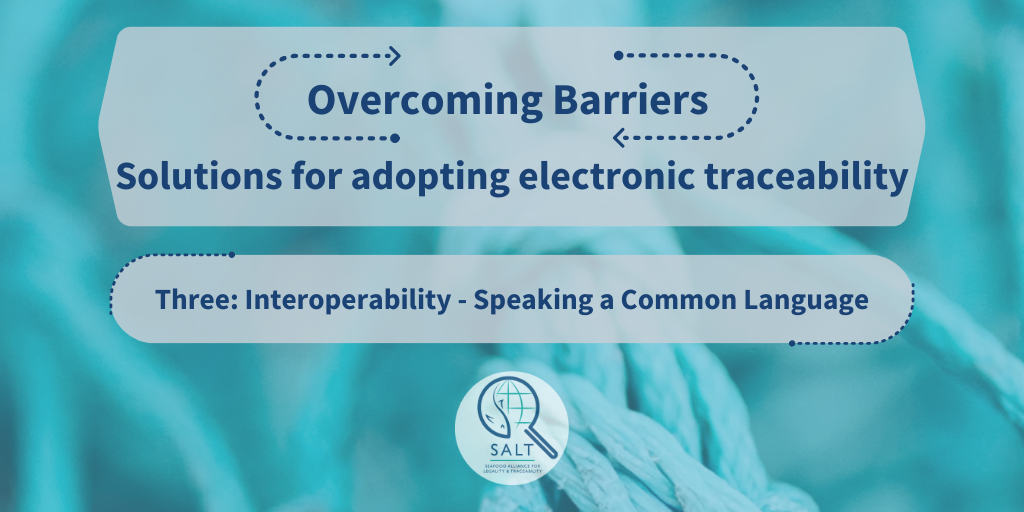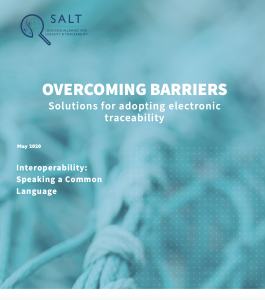
Chapter three in SALT's "Overcoming Barriers" series on adopting electronic traceability
Interoperability: Speaking a Common Language
Introduction
Illegal, unreported, and unregulated (IUU) fishing damages fish stocks around the globe. Additionally, illegal fishing practices can sometimes occur alongside human rights abuses. Now, the world is waking up to these injustices. Government import regulations are working to ensure illegal products don’t enter their national markets, and some consumers are voicing their preference for certified and sustainably harvested fish1.
Thankfully, companies currently deliberating making the switch to electronic traceability are not the first companies to undergo this conversion. The trailblazers who have piloted electronic traceability, along with their NGO partners, have written case studies, described solutions that helped them overcome obstacles, and created tools to make the process easier for others. Here, SALT has distilled this information to walk the seafood industry through the barriers to adopting electronic traceability and provide potential solutions to overcoming the challenges a company might face. This blog is the third in the series, “Overcoming Barriers: Solutions for adopting electronic traceability.”

In the previous “Overcoming Barriers” blogs, SALT addressed the indirect and direct benefits for industry when widespread electronic traceability is adopted – such as the potential for improved fisheries management, greater social responsibility, food safety assurance, and strengthened brand reputation. In this blog, SALT covers the two main challenges to interoperability and highlights the solutions brought forth by the Global Dialogue on Seafood Traceability. Namely, we cover these two dominant technical obstacles to interoperability:
- A lack of standardized terminology and definitions for data collected. This is often referred to as employing a ‘common language.’
- The need for alignment on data formatting, which is also known as a ‘common technology architecture.’

